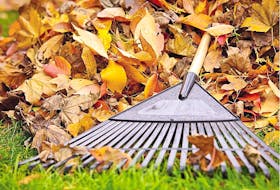A fireplace is a cosy and warm spot around which a family can gather. The home and real estate resource HomeGuides.com indicates that 60 percent of new homes have a fireplace, which is up from 36 per cent in the 1970s.
Naturally, fueling a fireplace for the season may require homeowners with wood-burning units to keep an ample supply of wood at the ready. How that wood is stored is important, as properly stored firewood can prevent waste and other issues around the house.
Wood that is freshly cut has a water content of 60 per cent or more. Yet, for best burning ability, wood should be near 20 per cent in water content. Green wood is hard to ignite and will not burn nearly as well or efficiently as seasoned wood. Another concern associated with green wood is that it can contribute more to creosote accumulation in the flue of a fireplace. Creosote is a combustible material that may lead to fires if left unchecked.
According to BioAdvanced, a science-based lawn, garden and home improvement innovator, seasoning wood typically takes six months to a year. Homeowners may opt to purchase seasoned wood that already has sat and dried.
Homeowners who have an abundance of firewood have to store it somewhere. Log Splitters Direct suggests choosing a dry, breezy area of the property that is about 20 feet from the nearest door to the house. This helps avoid hitchhiker pests from coming inside with the wood, such as termites, ants, spiders and mice. Do not stack the wood flush against a structure. It should be at least a few inches away to allow airflow behind the stack.
Stick to organized rows of wood no more than four feet high. Log racks and pallets and posts will keep the wood up and off of the ground where moisture and rotting can develop. Placing the logs in an unorganized pile will impede air flow and cause the wood to rot rather than continue to dry and season even more.
Homeowners also should use a cover to protect seasoned firewood from the elements. Position a tarp or plastic sheeting so it blankets the top of the stack and extends a few inches down the sides. Keep the sides mostly exposed to air. Others prefer to stack it in a barn or shed or under an overhang.
Green wood is less expensive than seasoned wood. Those who prefer this method should do so in the early spring and let it season over the next several months.
Bankrate says that the cost of a cord of wood varies across the country, but in general one can expect to pay between $120 and $180 for a cord of hardwood that is split and seasoned. This price may be higher in mid-winter when demand increases.









